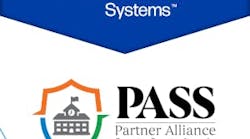SecurityInfoWatch.com recently spoke with Patrick V. Fiel Sr., the former security chief of the Washington, D.C., public schools, to get his thoughts on some of the most pressing topics in school security today.
Fiel is a veteran of a tough, inner-city school district that was plagued by crime areas that bordered its campuses, and he faced the common challenge of finding funding, plus issues of gang violence and drugs. Fiel took a collaborative approach with community leaders to enhance security at the D.C. school facilities (all 163 of them), and he made a point to use some of the latest technology to assist in the process. Fiel, who is now the public safety advisor with ADT, shares some thoughts on school security in this exclusive Q&A. He will be part of a Thursday, June 23, 2005, webinar on school security that you can sign up to watch by clicking here.
SIW: What is happening with school security funding these days?
Fiel: What I’m seeing with school security is that schools today are looking to new places to find funding for security improvements. They’re not just relying on grants; instead schools are going to their communities to fund security improvements. They’re finding not only grants, but bond money and capital improvement funding. Schools have always needed security, but traditionally schools have had no money to make these changes. Today, however, schools are starting to find the funds that they need.
How did the Columbine incident change school security? Was there a sense of complacency before that tragedy?
I would not say that there was complacency, but I would say that there was not as strong of an interest as now. Before Columbine, schools in urban areas already had developed some response plans and programs, but after the Columbine incident, we saw laws and mandates and Congressional bills to develop security and disaster plans for all schools. They have put in emergency plans and made their plans curriculum-based. They’re getting in touch with their peace officers and local authorities now.
What is changing in terms of sharing security event information and video data, and how are schools enabling communications between school authorities and law enforcement?
Here in Virginia, Fairfax has put in place an excellent crisis management program. Their director, Fred Ellis, has worked with all local authorities to create the response plan and is leading a steering and planning committee with the key players to determine responses before a tragedy occurs. In today’s world, we have to know who is talking to whom, and police need to know what the total situation is when they respond. We’re seeing police tying in with the school camera systems, for example, but it varies from jurisdiction to jurisdiction.
When I was with the D.C. schools, I was able to access the video information remotely. From my house, I could access info on all 163 of Washington, D.C.’s school campuses. Making the video accessible is also a great opportunity for verification of alarms and for after-hours situations at the school facilities. When you go back and look, Columbine had internal cameras. But times have changed. Police need that capability to view the video feeds.
What were some of the lessons you learned while running the security program for Washington, D.C.’s public schools?
In terms of security, I was dealing with the urban life. To create security at our schools, we used top technologies, including cameras and access control devices. We made a point to get buy-in from the entire community. We worked with them and got their input, and we kept schools as a place of learning, and made sure they didn’t look like prisons.
A lot of our students walked to/from school. Our students told us that they felt safe while they were at the school, but not on their way there. When they’re on their way to the school setting they face every obstacle as part of the urban landscape. They pass through abandoned areas, drug areas, and crime-infected areas. One of my focuses has been the idea of safe passages. It means creating a passage way that is better protected, working with local businesses, making areas better lit, creating more patrols, directing students away from the crime areas and isolated areas, and in sometimes using cameras along the route.
I grew up in Virginia in Portsmouth in the city, and I grew up walking to school. I had a choice to take the short-cut through the rougher, crime-plagued areas, or to take the long way around to go through the safer areas. I was lucky that I had that choice; a lot of students attending urban schools don’t have that choice. When we [ADT] do presentations, we not only talk about security systems with schools, but we also promote the idea of safe passages to administrators and law enforcement.
You made our newswire on Monday when a story came out about how Fort Lauderdale/Broward County is looking to improve its school security. The story mentioned the use of biometrics, especially to record attendance and to know that a student is still on campus. What’s your take on this technology?
I think it’s going to be the wave of the future. I think it’s easy to recognize that students don’t like ID cards. With biometrics, they’ll be able to use their fingerprint, something they don’t have to ‘carry’, to gain access, and to sign-in to school. The systems are in their test/beta versions now, but just like GPS tracking as a security technology, biometrics will be a standard part of the future. With what I’m doing, and in technology like biometrics, I see that technological solutions are now able to solve many school security problems.
Learn More:
You can hear more from Patrick Fiel on the topic of securing our schools. Watch "Safer Campus: Integrating Security with Communications to Better Protect Schools", a free webinar from SecurityInfoWatch.com, ADT and Marconi. Sign up here.


